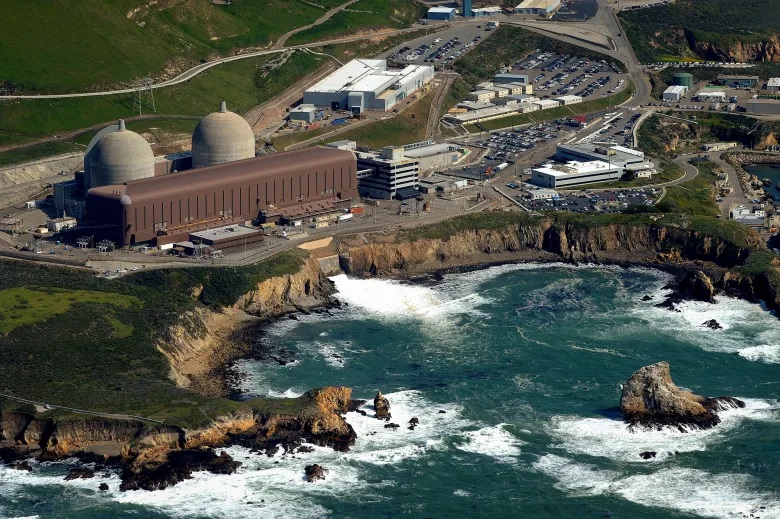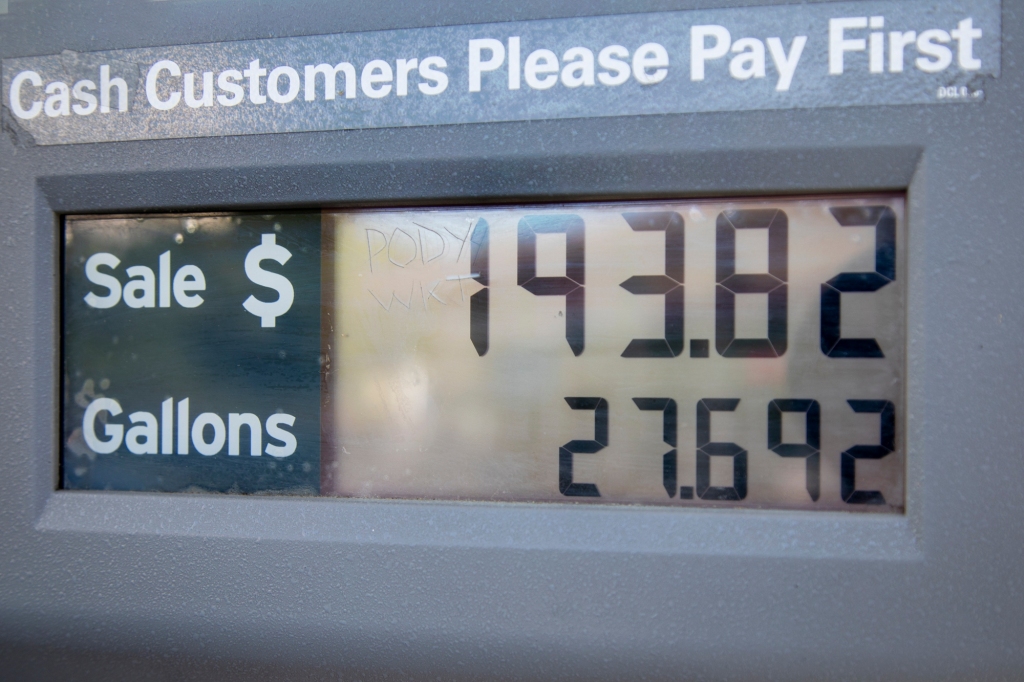Heading into the hottest weekend of the year, amid growing concerns about strained power supplies, state lawmakers in Sacramento early Thursday morning voted to extend the life of California’s last nuclear power plant, Diablo Canyon, until at least 2030.
With a bipartisan vote of 67-3 in the Assembly and 31-1 in the Senate around 1 a.m., lawmakers sent a bill to Gov. Gavin Newsom to authorize the plant, located along the San Luis Obispo County coast, to continue operating five years beyond 2025 — a shutdown date that its owner, Pacific Gas & Electric, and the state had agreed to in 2016.
“The last time we didn’t keep the lights on, at the beginning of the century in 2002, we lost a governor,” said Assemblyman Bill Quirk, D-Hayward, referring to the recall of former Gov. Gray Davis.
“You know who’s going to get blamed for this if it doesn’t happen?” said Quirk, a physicist who worked at Lawrence Livermore National Laboratory. “It’s us Dems, and it should be. We’re in control in the Capitol. We will get blamed if the lights go out.”
The vote capped the final, frenzied day of the legislative session.
The Legislature’s Democratic majority also passed nearly half a dozen high-profile environmental and clean-energy bills that target climate change and which Newsom had been pushing in recent weeks along with the Diablo Canyon extension.
Among them: a ban on new oil and gas drilling within 3,200 feet of homes, schools, nursing homes and hospitals. Targets for 90% of the state’s electricity to come from renewable sources such as solar and wind by 2035 and 95% by 2040. And a measure requiring the California Air Resources Board to develop carbon storage projects at polluting industries, like oil refineries.
In recent months, a worsening Western drought has left Lake Mead and Lake Powell, key water supplies for California, Nevada and Arizona, at record low levels. Temperatures Labor Day weekend are expected to exceed 115 degrees in some inland parts of California, prompting the state’s grid operators to call a “Flex Alert” asking people to conserve power at peak times between 4 p.m. and 9 p.m. to reduce the risk of blackouts.
“We’re seeing flooding, fires, drought, heat waves,” said state Sen. John Laird, D-Santa Cruz, who led the efforts on several of the bills. “All those things have weakened, almost totally, the climate deniers. And while there are still plenty of them and interest groups fighting this kind of legislation, the public knows this is an urgent worldwide crisis.”
The marquee question of the evening was the fate of Diablo Canyon.
The plant near Avila Beach opened in 1985 after years of protests by anti-nuclear activists. Following the closure of the Rancho Seco nuclear plant near Sacramento in 1989 and the shuttering of the aging San Onofre Nuclear Generating Station in San Diego County in 2013, Diablo Canyon is the last outpost of nuclear power in California.
Diablo Canyon, the largest power plant in California, generates about 2,200 megawatts of electricity at full capacity — enough to power 3 million homes. It currently provides about 9% of the state’s electricity supply.
In 2016, PG&E signed an agreement with then-Gov. Jerry Brown to close the plant, which faced a costly effort to win relicensing from the federal government with safety and seismic upgrades likely needed. Public concerns about nuclear power also grew after explosions and a radiation release at the Fukushima nuclear plant in Japan in 2011 following a 9.0 earthquake and massive tsunami. And there is no central federal storage place for spent nuclear fuel.
But over the past year, concerns have grown among regulators at the California Energy Commission and other agencies that taking nearly 10% of the state’s electricity off line would increase the risk of blackouts.
California is expanding renewable energy sources to reduce greenhouse gas emissions that drive climate change. But electricity shortages have arisen on hot days when the sun goes down, reducing solar power production while millions of residents’ air conditioners are running.
“The reality is we’re living in an era of extremes,” Newsom said Wednesday. “Getting Diablo Canyon extended for a short period of time will provide us the capacity to stack all these renewables. That energy does not produce greenhouse gases. That energy provides baseload, reliability and affordability.”
Newsom also noted that President Biden has offered $6 billion through the federal Department of Energy to help keep aging nuclear plants operating and that PG&E will apply for some of that money.
Anti-nuclear groups and some environmental groups oppose keeping Diablo Canyon open. They said that a $1.4 billion state loan included in the bill would be better spent on incentives for more renewable power and large-scale battery storage, a fast-growing technology that helps power the grid when the sun goes down on hot days, air conditioning use remains high and solar power generation wanes.
“Gov. Newsom would, in essence, bribe PG&E with billions of dollars from federal and state taxpayers to break its agreement so he can burnish his reputation as the governor who prevented power outages,” said Linda Seeley, a spokeswoman for Mothers for Peace, an anti-nuclear group based in San Luis Obispo. “Unfortunately, he is trading short-term headlines for a post-2025 future in which California electricity is less secure, less safe, less clean and more expensive.”
But lawmakers overwhelmingly rejected that view, approving the measure, SB 846, easily.
“A vote for this bill is a vote for a reliable electricity grid,” said Assemblyman Jordan Cunningham, R-San Luis Obispo.
Added Assemblyman Chris Holden, D-Pasadena: “I am not a proponent of the Diablo Canyon power plant. But I am a proponent of keeping the lights on.”










